Description
Bernard Hinault
Bernard Hinault (born 14 November 1954) is a French former professional cyclist. With 147 professional victories, including five in the Tour de France, he is often named among the greatest cyclists of all time.
1978–1983: Renault – Gitane – Campagnolo
1978: Grand Tour breakthrough
At the beginning of 1978, the Gitane team was taken over by its parent company, the state-owned car manufacturer Renault, becoming Renault–Gitane–Campagnolo.Hinault started the season with second place at Paris–Nice. He then competed in the Critérium National de la Route. Trailing Raymond Martin by more than two minutes before the final 22 km (14 mi) time trial, he made up his significant deficit and won the event.
Hinault then competed in his first three-week Grand Tour, at the Vuelta a España, then held at the end of April. He won the opening prologue time trial in Gijón, but then let the leadership switch to Ferdi Van Den Haute. He won stage 11b, a mountain time trial in Barcelona, and regained the race lead the next day when he won the stage to La Tossa de Montbui after an escape with teammate Jean-René Bernaudeau. He ensured his overall victory by winning stage 18 to Amurrio. On that stage, he bridged over to escapee Andrés Gandarias, who had earlier asked for Hinault’s permission to attack. Hinault claimed to have been annoyed into attacking by one of Gandarias’s teammates and offered to carry him to the finish. However, the Spaniard was unable to follow his wheel, saying: “This guy has made me suffer like a dog, he’s tougher than Eddy Merckx!” In all, Hinault won five stages of the Vuelta. A sixth win was prevented on the final day of the Grand Tour, on which a short time trial was raced in the afternoon, held at San Sebastián in the Basque Country. The stage was marred by protests and obstructions by supporters of the Basque separatist group ETA. Hinault himself had sand thrown into his eyes, but won the stage nonetheless, only to find that the results would not count due to the surrounding circumstances.
Ahead of his first Tour de France, Hinault raced in the Tour de Suisse, where he did not feature prominently. He then traveled to the French Road Race Championship, held at Sarrebourg. He launched an escape, on which he rode 55 km (34 mi) solo, leading the rest of his competitors by more than six minutes by the start of the last lap. However, he had forgotten to eat enough and suffered from hypoglycemia during the last part of the race, crossing the finish line to take the title severely weakened. His victory allowed him to wear the French tricolore jersey for the following year.
In the Tour de France, Hinault fell behind early to challenger Zoetemelk when Renault lost two minutes to Mercier during the team time trial. On stage 8, the first longer individual time trial, Hinault gained back 59 seconds on Zoetemelk, while the previous two Tour winners, Van Impe and Thévenet, lost so much time that they were now counted out from chances of an overall win. Hinault rode conservatively in the Pyrenees to stay within striking distance of Zoetemelk. On stage 12a, from Tarbes to Valence-d’Agen, he firmly imprinted his authority on the race, although not by riding. The riders had been complaining about split stages, where more than one would be held on one day, as was the case on 12 July. When they reached the finishing town, they dismounted their bikes and walked to the finish line in protest. Hinault was chosen by his fellow competitors to be the spokesperson of the strike. Journalist Felix Magowan wrote: “Before today’s strike, people were asking if the Tour had a boss. Today that was answered. His name is Hinault.” Following the strike, Hinault had trouble sleeping and was caught out the next day, a stage in the Massif Central, forcing his team into a long chase. Thus weakened and slowed by spectator interference at a bike change, he lost 1:40 minutes to Zoetemelk on the following day’s uphill time trial. Hinault countered the next day en route to Saint-Étienne during stage 15, breaking away with Hennie Kuiper. By the finish, the two had been reeled back, but Hinault contested the finishing sprint, winning the stage. The following day, stage 16 to Alpe d’Huez, ended with Zoetemelk, Hinault, and the temporary leader of the general classification and thus yellow jersey wearer Michel Pollentier separated by only 18 seconds. However, Pollentier was disqualified for trying to cheat his doping test, leaving Hinault and Zoetemelk to fight out the overall victory. On the final mountain stage, Hinault put his rival under pressure but was unable to make up any time. He then clinched the yellow jersey in the final time trial, gaining more than four minutes to win his first Tour de France with an advantage of 3:56 minutes. Following his Tour win, he finished fifth at the World Championships, before once more winning the Grand Prix des Nations, this time ahead of Francesco Moser.
1979: Second Tour victory and Classics success
The 1979 season started slowly for an off-form Hinault. He bounced back at the La Flèche Wallonne classic in April, when he caught up to a breakaway by Giuseppe Saronni and Bernt Johansson, outsprinting the former to win the race. He then beat Zoetemelk to victory at the Dauphiné Libéré, winning four stages. He won the race by over ten minutes, also taking the points and mountain classifications. In the coming weeks ahead of the Tour, he proved his willingness to assist his teammates to ensure their loyalty, helping Lucien Didier win the Tour de Luxembourg and finishing second behind Roland Berland in the National Championship race.
The Tour de France was again a two-way battle between Hinault and Zoetemelk. In the prologue, Hinault was fourth, on the same time as the Dutchman. The mountain stages started immediately thereafter, with Hinault winning the mountain time trial on stage 2, taking over the yellow jersey. He also won the next stage into Pau. The team time trial on stage 4 again went Zoetemelk’s way, as his Mercier team took back 41 seconds on Hinault’s Renault squad. Zoetemelk now was only 12 seconds behind Hinault. On stage 8, in another team time trial, Renault fared much better, and Hinault extended his advantage to 1:18 minutes. The next day, however, on a stage containing cobbled sections, Hinault suffered two punctures, losing almost four minutes and the race lead to Zoetemelk. He took back 36 seconds on the time trial in Brussels on stage 11 before regaining the race lead after another time trial, uphill to Avoriaz on stage 15. At this stage, he led Zoetemelk by 1:48 minutes, with third-placed Kuiper already more than 12 minutes behind. Hinault gained another minute on stage 16, before Zoetemelk regained 47 seconds up Alpe d’Huez three days later. The final time trial of the Tour went Hinault’s way once again, extending his advantage by a further 69 seconds. He also took the next stage in a slightly uphill sprint finish. On the final stage towards the Champs-Élysées in Paris, traditionally a ceremonious affair without attacks, Zoetemelk and Hinault broke away, with both gapping the field and Hinault taking another stage victory. Zoetemelk finished 3:07 minutes behind Hinault, but then had ten minutes added to his time for failing a doping test. The next finisher, Joaquim Agostinho, was almost half an hour behind the winner.
Towards the end of the season, Hinault won his second cycling monument, the Giro di Lombardia. He had escaped from the field 150 km (93 mi) from the finish, but was later joined by some other riders. Only Silvano Contini finished with him, with the next group more than three minutes behind. The victory also secured that Hinault won his first of four consecutive Super Prestige Pernod International competitions, the award handed to the best rider of the season.
1980: Attempt at the Triple Crown
As was often the case, Hinault started the season slowly in 1980, withdrawing from Paris–Nice. He then entered Paris–Roubaix, partly to prepare for the cobbled sections in the upcoming Tour de France, and finished fourth. A week later, he scored one of his most memorable wins at Liège–Bastogne–Liège. As soon as the riders left Liège, snow began to fall, soon turning into a blizzard. Hinault wanted to abandon, as had many others, including all but one of his teammates. He was convinced to carry on until the feeding station at Bastogne, where the snow had turned into rain. Only 21 riders were left by this point. Hinault removed his rain cape and attacked, catching up to the leaders and carried on by himself, winning with a margin of almost ten minutes ahead of Kuiper. The victory came at a price, as his right index and middle fingers took weeks to recover from frostbite, and caused him pain for several years.
Hinault and Guimard then turned their attention to the only Grand Tour he had not won yet: the Giro d’Italia. They hoped that Hinault would be able to reproduce a feat Eddy Merckx had achieved in 1974, winning the Giro, the Tour, and the World Championship in the same year. This is commonly referred to as the Triple Crown of Cycling.
Hinault started the Giro d’Italia as an odds-on favorite, pitted against local riders Francesco Moser and Giuseppe Saronni, who had the home crowd on their side. Following a fourth place at the prologue in Genoa, Hinault made a spontaneous visit to Fausto Coppi’s home of Castellania, paying respect to the first rider ever to have won Giro and Tour in the same year. On stage 5, a time trial to Pisa, Hinault took over the race leader’s pink jersey. He then relinquished his lead to Roberto Visentini, who was not considered to be a contender for the final victory. On stage 14, he attacked when the peloton relaxed after an intermediate sprint, winning the stage ahead of Wladimiro Panizza, who took the race lead. Hinault then made the decisive move of the race on stage 20, when he attacked on the tough climb of the Stelvio Pass. He caught up with his teammate Bernaudeau, and both carried on for the remaining 80 km (50 mi) of the stage together. Hinault gifted the stage victory to his teammate, while he clinched the overall victory almost six minutes ahead of Panizza.
In the Tour de France, Hinault was once again set to duel with Joop Zoetemelk, who had moved to the dominant TI–Raleigh–Creda squad. Hinault won the prologue in Frankfurt, Germany, five seconds ahead of Gerrie Knetemann. On stage 5 from Liège to Lille, which contained cobbled sections used in Paris–Roubaix, conditions were poor with rain and heavy winds. Hinault called for the field to take a slow tempo, but when Zoetemelk’s teammate Jan Raas attacked, he went after him. He eventually found himself in a group with several other riders, while Zoetemelk was distanced. At 20 km (12 mi) from the finish, he followed another attack from Kuiper and won the sprint at the line. The next stage was set to contain more cobbled roads, but on Hinault’s protest, most of the worst parts were taken out. Hinault had however suffered damage to his left knee on the stage to Lille. Hinault finished only fifth on stage 11’s individual time trial, won by Zoetemelk. While he regained the yellow jersey, Zoetemelk was second, only 21 seconds behind. With his tendinitis worsening, he carried on until the end of stage 12, just before the race was headed for the first high mountains in the Pyrenees. That night, Hinault and Guimard told the race organizers, Jacques Goddet and Félix Lévitan, that he would abandon the race, while still in the lead. He left the race at night, not informing the press, which led to a fallout with the media that took years to recover. In Hinault’s absence, Zoetemelk duly won his only Tour de France. Insinuations that Zoetemelk’s victory had been a gift through Hinault’s absence were countered by Hinault himself: “My problems were of my own making. It is always the absent rider who is at fault. I was absent and he took my place.”
Robert Millar escribing his experience riding next to Hinault during the 1980 World Championship road race.
Hinault returned from the disappointment of the Tour to start at the World Championship road race, held on a very tough parcours in Sallanches, France, often named the hardest course in the history of the event. Hinault had broken away about 80 km (50 mi) from the finish with several riders. On the last lap, he dropped his last companion, Gianbattista Baronchelli, on the steepest part of a climb and soloed to victory. It had been a race of attrition with only 15 out of 107 riders reaching the finish.
1981: Winning a third Tour de France
Hinault had never made his dislike for riding on cobbled roads a secret. The most prominent race of this character, Paris–Roubaix, was met with particular disdain, even though he never finished lower than thirteenth. After the 1980 edition, he had said to organizer Goddet: “You will never see me in this circus again.” However, he returned for 1981, saying that he did so out of respect for his stature as World Champion. He suffered seven crashes and tire punctures but reached the finish at the velodrome with the lead group, where he outsprinted favorites Roger De Vlaeminck and Moser. One-and-a-half weeks earlier, he had already added a victory at the Amstel Gold Race. Furthermore, he also won the Critérium International and again dominated the Dauphiné Libéré, winning by twelve minutes ahead of Agostinho.
At the Tour de France, Hinault took an early lead by winning the prologue, then relinquished the yellow jersey to Knetemann and later to Phil Anderson. On the time trial to Pau on stage 7, he regained the lead and never lost the jersey, beating Van Impe by almost a quarter of an hour. He won five stages, including all four individual time trials. Amidst media criticism that he was riding too defensively in the mountains, he also took victory in the Alps on a stage to Le Pleynet.
At the World Championship in Prague, Czechoslovakia, Hinault failed to defend his title. Having bridged a two-and-a-half-minute gap to a strong lead group on his own, he came third in the final sprint, behind Freddy Maertens and Saronni.
1982: Achieving the Giro-Tour double
Hinault returned to the Giro in 1982. He looked set for victory after the first two weeks, having taken a significant lead after wins in the stage 3 time trial and stage 12 to Campitello Matese. However, on stage 17 to Boario Terme, Guimard and the Renault team misjudged the toughness of the climb and Hinault lost the lead to Silvano Contini. He hit back the next day, winning the stage to Montecampione, turning the race in his favor.
In “his most uneventful Tour”, Hinault never looked in trouble on his way to completing the Giro-Tour double at the Tour de France. He won the prologue in Basel, Switzerland, before the lead briefly turned to Ludo Peeters and Phil Anderson. Hinault regained the yellow jersey after the first time trial and won the overall classification easily. He took four stages, including again the final one on the Champs-Élysées, this time from a bunch sprint. His participation in the final-stage sprint was seen as an answer to critics, who had once again lamented that Hinault had ridden the Tour without panache. Zoetemelk was again the runner-up, more than six minutes behind Hinault. Later in the season, Hinault added another victory at the Grand Prix des Nations.
1983: Second Vuelta and the ascent of Fignon
Since 1981, Hinault had been joined at Renault by two young talents, Laurent Fignon and the American Greg LeMond. Both joined Hinault for the Vuelta a España, where he faced stiff competition from local riders like Marino Lejarreta, Julián Gorospe, and Alberto Fernández. Six days before the race started, he had won La Flèche Wallonne for a second time. On stage 4 of the Vuelta, Fignon attacked and won, but Lejarreta, the defending champion, had followed him and gained time on Hinault. Hinault came back and took the lead the following day on the mountain stage to Castellar de n’Hug. However, a day later, the Spanish teams jointly attacked and Lejarreta moved ahead of Hinault, who was 22 seconds down. At the uphill time trial at Balneario de Panticosa, he suffered and finished more than two minutes behind Lejarreta. Hinault joined forces with Kuiper and Saronni to attack on stage 10 to Soria, affected by crosswinds. He was in trouble again on stage 14, affected by returning pain in his knee; at one point he trailed his rivals by more than five minutes but regained contact. In the time trial around Valladolid on stage 15b, Hinault won, now just ten seconds behind Gorospe, the new leader in the general classification. The following day brought the last mountain stage and Renault put pressure on Gorospe from early on. Hinault, joined by Lejarreta and Vicente Belda, escaped for 80 km (50 mi), distancing Gorospe by over twenty minutes with Hinault taking victory in Ávila, sealing his second Vuelta victory. Due to the tightly fought battle between Hinault and his Spanish competitors, the 1983 race is described on the Vuelta’s website as “one of the most beautiful and spectacular” editions.
During the Vuelta, Hinault’s tendinitis returned. After the race, he made two failed attempts to get back into racing but eventually announced that he would miss the Tour de France. In his absence, teammate Fignon won the event on his first attempt. Hinault tried another comeback at a post-Tour criterium, but the pain returned and he did not race for the remainder of the season.
Excerpt from Wikipedia, the full article can be seen here: https://en.wikipedia.org/wiki/Bernard_Hinault
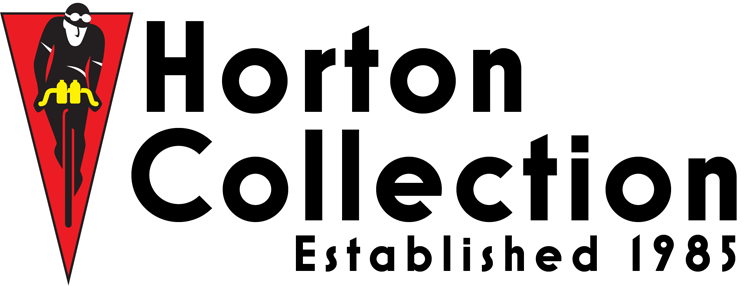
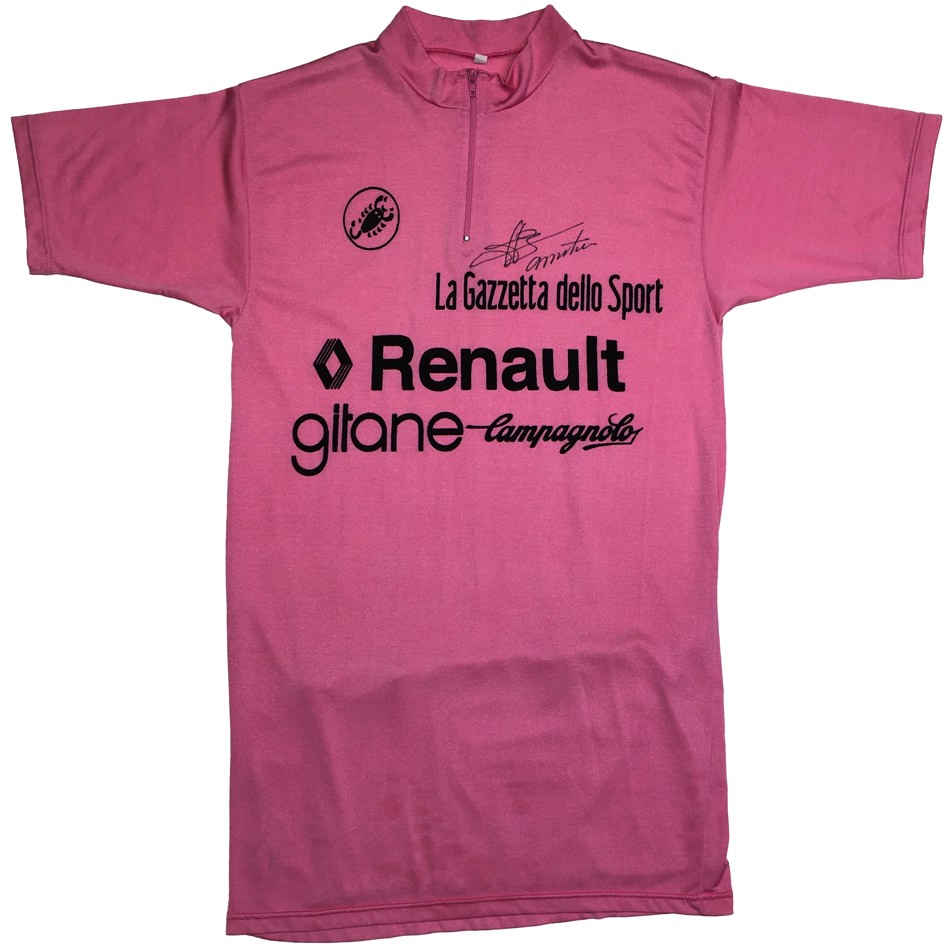
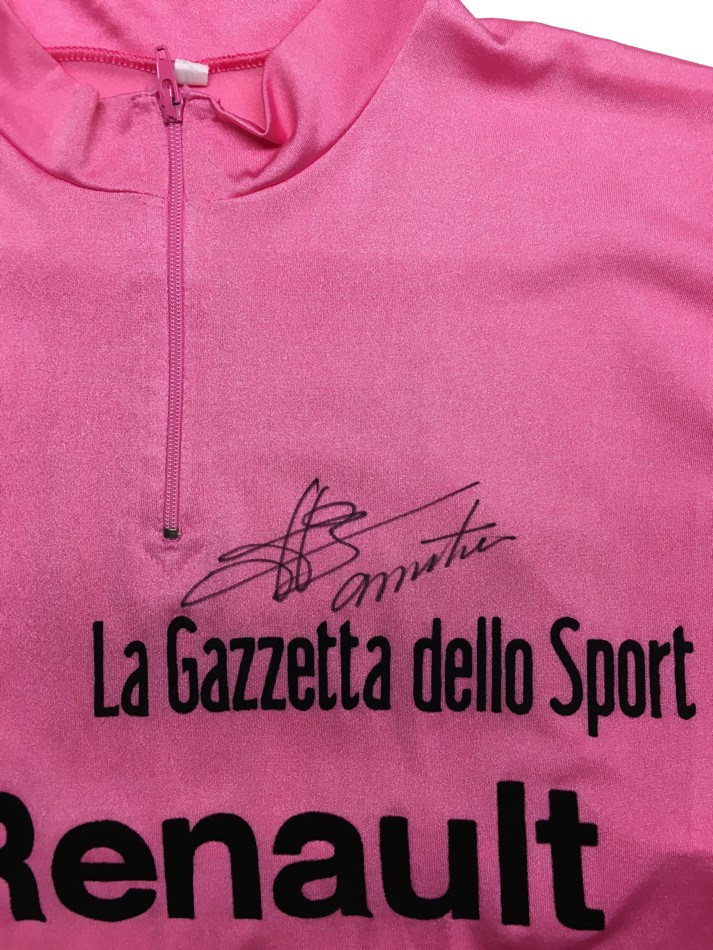
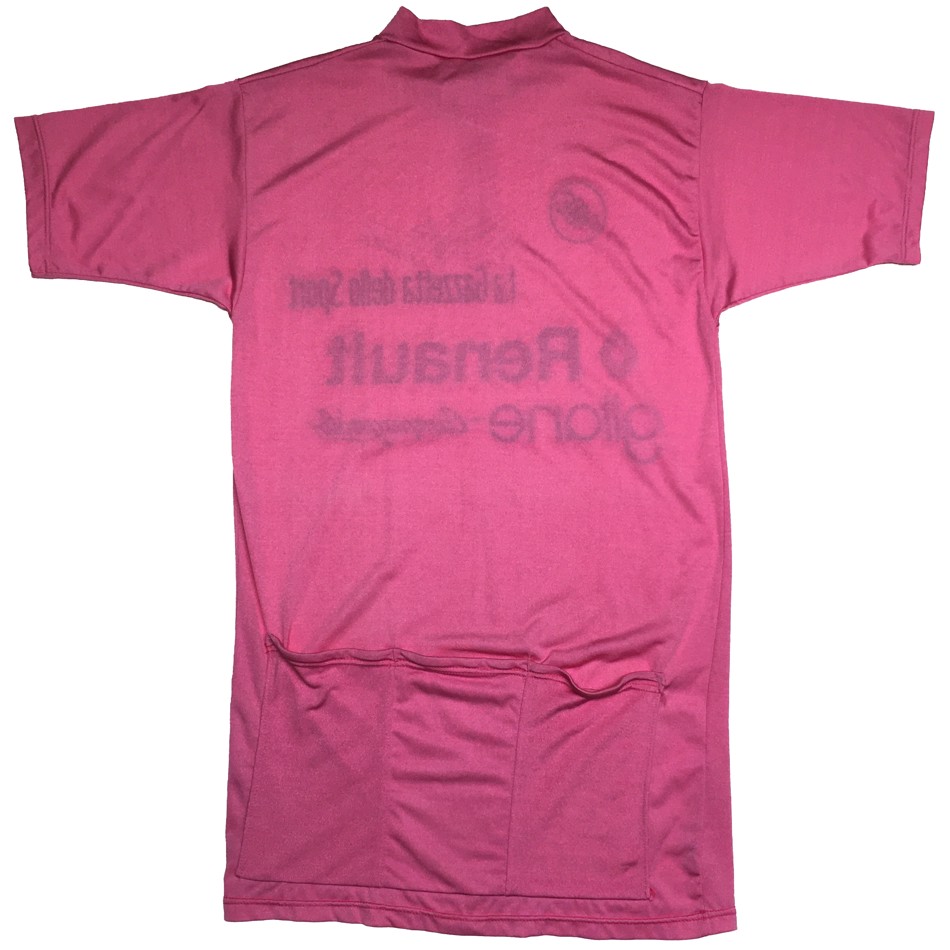
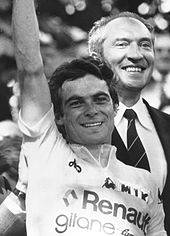
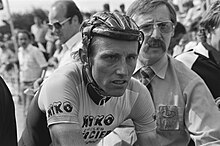

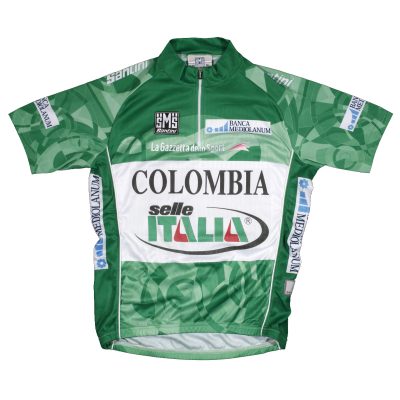
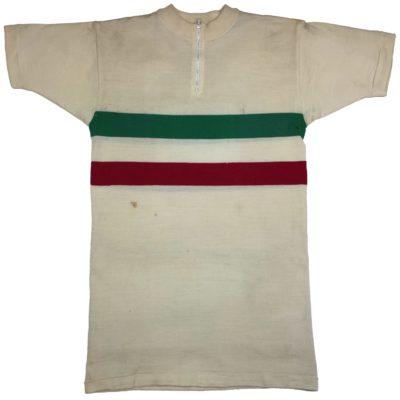
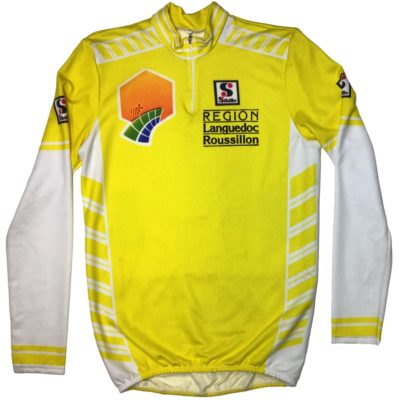
Recent Comments